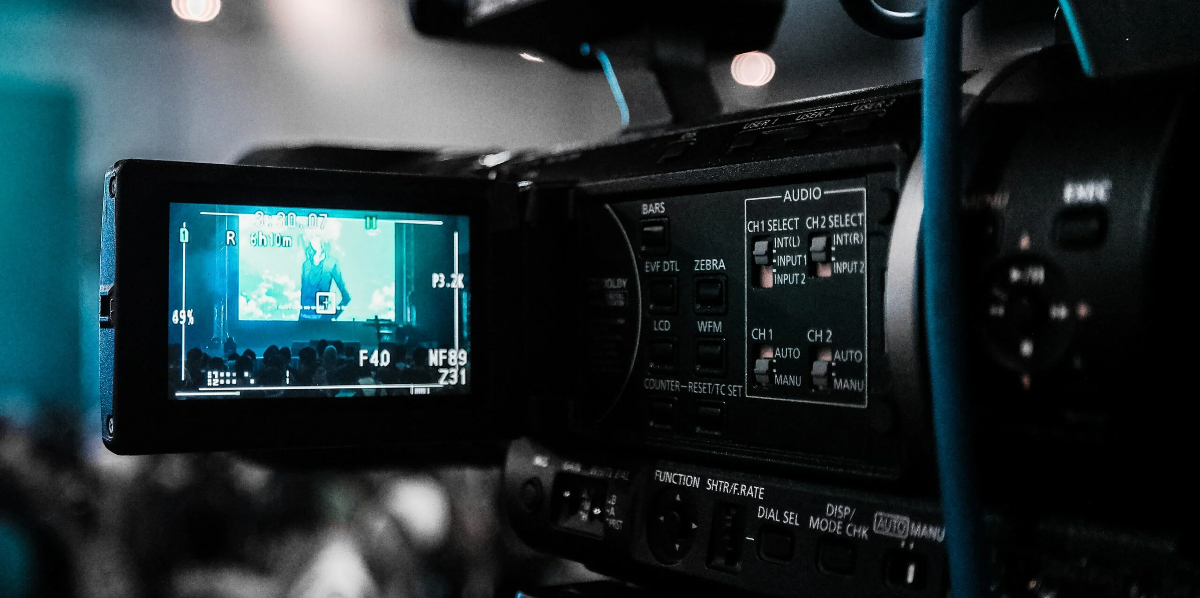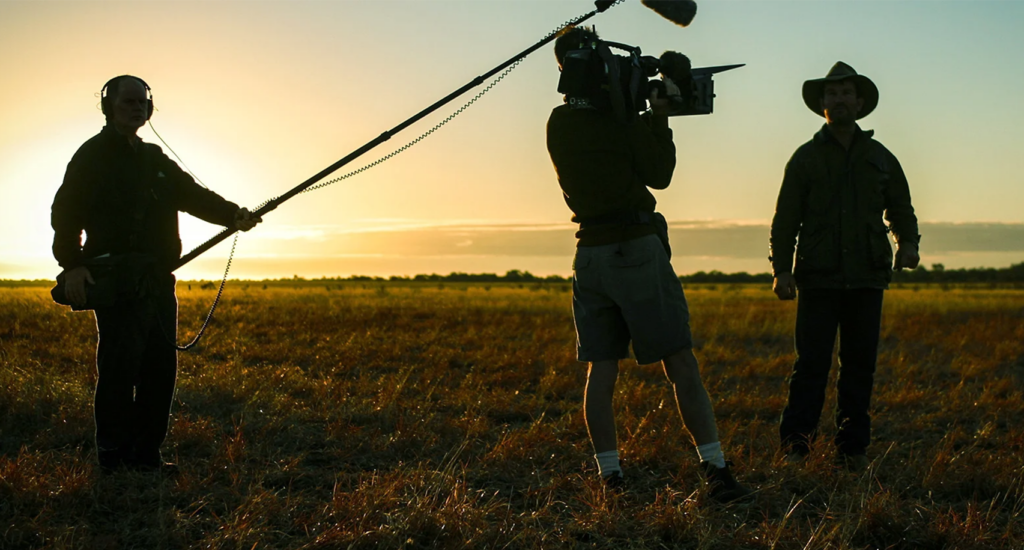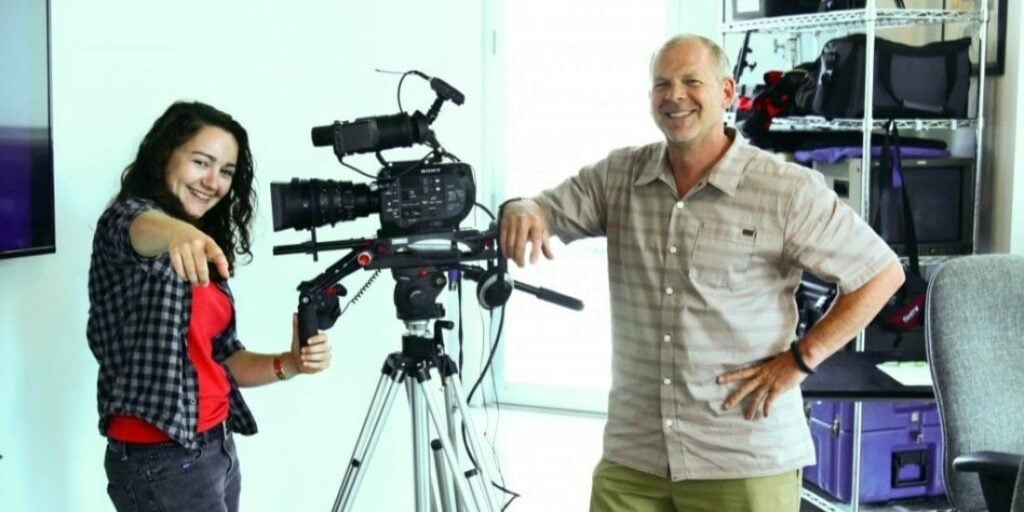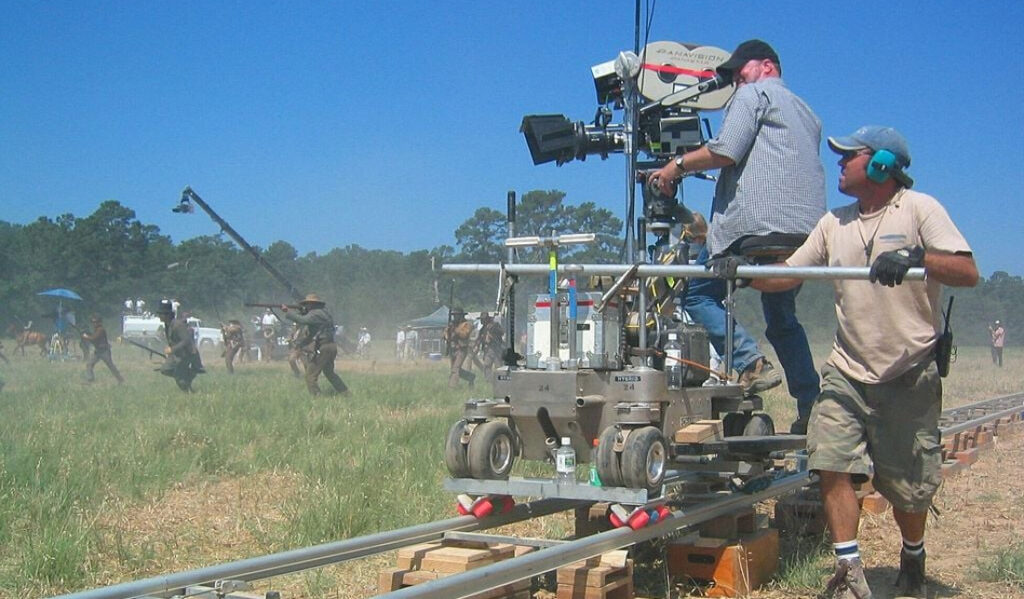A cinematographer, also known as a director of photography (DP), is a key member of the film or video production team. What does a cinematographer do? Their primary responsibility is to capture the visual elements of a movie, TV show, commercial, or any other form of visual storytelling. Cinematographers work closely with the director to translate their artistic vision into compelling and visually stunning images.
What does a cinematographer do?
Cinematographers are the artists behind the lens, using their technical and creative knowledge to create beautiful and meaningful visuals that enhance the story being told. There are many key roles and responsibilities for the cinematographer, including:
- Camera Operation
- Lighting
- Shot Composition
- Working With Director
- Camera Crew Management
- Problem Solving
Camera Operation
Cinematographers are responsible for selecting the right camera and lenses for the project’s needs and setting up the angles and shots to achieve the desired effect. Whether they choose when to use static shots, dolly shots, crane shots, Steadicam shots, or other camera movements, cinematographers have a range of techniques at their disposal.
They are the ones who add dynamism and depth to the visuals, making the audience feel a part of the story. Whether it’s a gripping action sequence or a tender romantic moment, cinematographers work tirelessly to create a captivating visual experience that truly brings the story to life.
To do this effectively, they must be knowledgeable about the latest industry trends and the most cutting-edge camera equipment technology available. Whether using traditional film cameras or advanced digital equipment, the well-versed cinematographer can make informed decisions on which techniques and tools to utilize.
Lighting
Another role of the cinematographer is to use their expertise and creativity to set the mood and visual style for each scene. They have to choose from an assortment of equipment and techniques to control the lighting’s intensity, direction, and color to achieve the desired look. Everything from the fixture to the bulb and even the filter can make all the difference in creating the perfect shot.
Cinematographers must know the exact placement of each light, making sure it highlights the areas they want in focus while shadowing the rest. With their skills, they can take a mundane scene and turn it into a captivating masterpiece. They design the ideal lighting setup to create the perfect mood and atmosphere for each scene.
Shot Composition
Shot composition is a crucial technique that contributes greatly to the success and visual impact of a film or video production. By arranging different elements within the frame in a meaningful and compelling way, choosing the right aspect ratio, when to use wide shots, and more, a cinematographer can help convey the emotion and narrative of a scene.
For instance, the positioning of characters or objects within the scene can signal their importance to the storyline or suggest a sense of tension or conflict. Shot composition can also play a powerful role in capturing the mood of a particular moment, or highlighting certain themes or motifs. Through careful use of shot composition, filmmakers can create visually stunning, emotionally resonant scenes that captivate audiences and leave a lasting impression.
Collaborating with the Director
Cinematographers work closely with the director to create and ensure that the visual elements of the movie match the director’s creative vision. Together, they discuss shot sequences and overall style, with the cinematographer lending their expertise to perfect the look and feel of the film.
A cinematographer’s keen eye for lighting, composition, and camera angles can elevate a movie from good to great. They are responsible for capturing the heart and soul of the story on screen, something that requires careful planning and attention to detail. The partnership brings a unique–and cohesive–perspective to a film.
Camera Crew Management
On larger productions, the cinematographer oversees a team of camera assistants, grips, gaffers, and electricians who assist in various aspects of camera work and lighting during a film or video production. These crew members collaborate closely with the cinematographer to execute their vision for the film’s visual elements.
The cinematographer guides and supervises the camera and lighting team to ensure that the shots are composed beautifully, the lighting fits the mood and tone, and the camera movements enhance the storytelling. They work together to achieve the director’s creative vision and bring the story to life through compelling visuals.
Problem-Solving
A cinematographer may encounter various potential problems during a film or video production that can throw a wrench in everything they have planned. From lighting troubles to camera malfunctions, and weather conditions to challenging environments, there is no shortage of complications that need to be sorted out.
However, it is the cinematographer’s job to find creative solutions to overcome these obstacles and deliver the desired shots. After all, it is the artistry that counts when it comes to creating a memorable movie or video. Effective problem-solving skills are crucial for a successful cinematographer in handling the unexpected during the filming process.
When watching a movie or video, it’s easy to get lost in the storyline and forget about the technical elements that make the production so captivating. However, the work of a cinematographer is an essential part of any movie or video production.
Their skillful use of camera angles, lighting, and composition can greatly impact the audience’s perception of the film. Their work serves as the bridge between the director’s vision and the viewer’s experience. Without their artistic input and technical expertise, movies and videos would lack the immersive and captivating visuals that we all know and love.
What Does a Cinematographer Do? Find Out From the Pros.
The best way to learn cinematography is to get your hands dirty, working with a variety of cameras and lighting options to get first-hand knowledge of how the equipment works. But you may not have the access nor the resources to get this experience. Film Connection has the solution.
We put you in the middle of the action, placing you in a working production company to give you real-world experience. From pre-production to post-production, you’ll work with a cinematographer in their element. Either on the set or on location, you’ll be working on productions that a classroom just can’t replicate.
In a matter of months, we’ll give you the skills, experience, and networking opportunities to break into the film industry as a cinematographer. Why sit in a school for years–and saddle yourself with massive student loan debt–when you can be getting practical experience at a fraction of the cost? It’s time to get started on your movie-making career.







